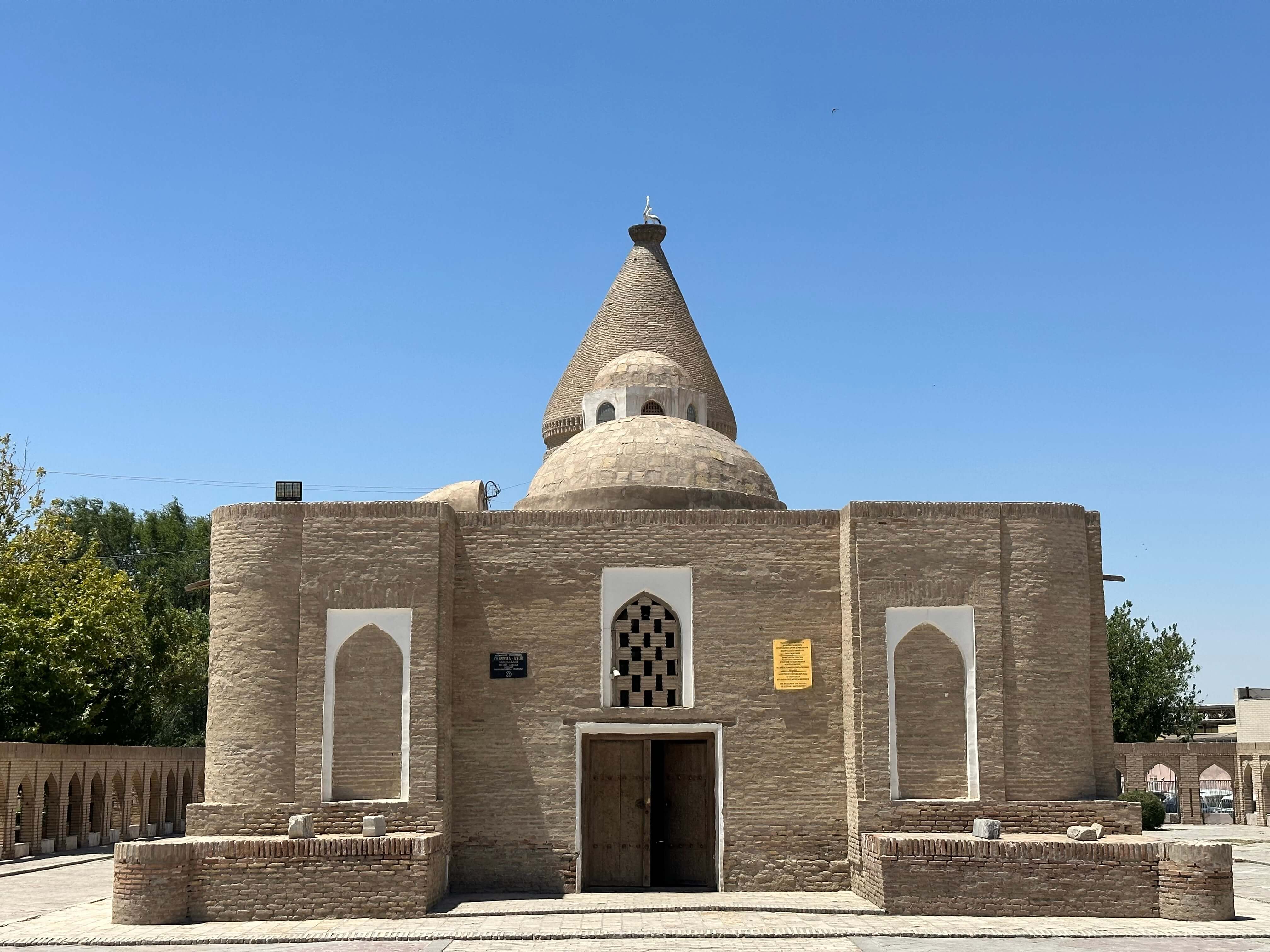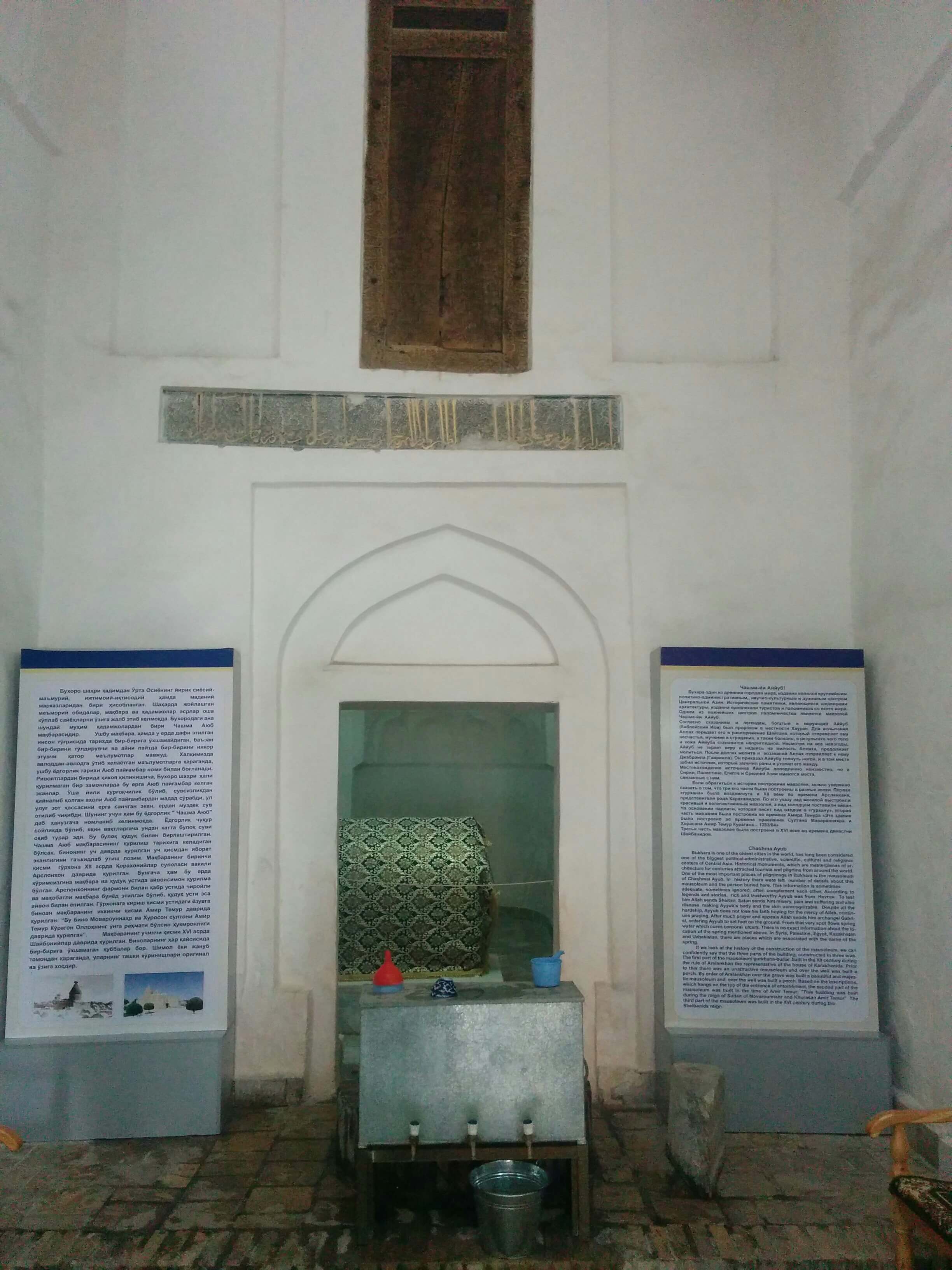Chashma Ayub
Showplaces

Damda.uz
The construction is a combination of two elements (a mausoleum and a holy source), is the famous architectural monuments of Bukhara. Today, there is a Water Museum in the complex.
This building was erected during the reign of the Karakhanids in the 12th century. The famous commander and ruler A. Temur after 2 centuries, continued the construction of the complex, inviting Khorezm masters for this, as a result of which the structure has similar features to the architecture of Khorezm.
But, on this construction was not over, it was rebuilt several times during the 14-19 centuries. In this building there are several burials, the earliest refers to 1022, Khodja Hofiz Gunzhori, the famous educational theologian, was buried there. The building has 4 rooms, each of which is covered with a dome.
The very first premise was built as a complex for burials, the remaining three were eventually added to the existing premises. With the mausoleum, as with many architectural masterpieces of Bukhara, ancient legends also connect. It speaks of Job, one of the prophets.
In the days when in ancient Bukhara strong heat and drought were prankish, and the townspeople suffered from a lack of drinking water. In response to their prayers, the prophet Job appeared to them, while making a journey through the lands of Bukhara. With its help, a healing spring appeared in the city, which saved the residents from intolerable drought and heat. A source appeared at the site of the impact of the staff of Job on the ground. In honor of this, the townspeople gave the name of the source - Holy Job (Chashma Ayub).

